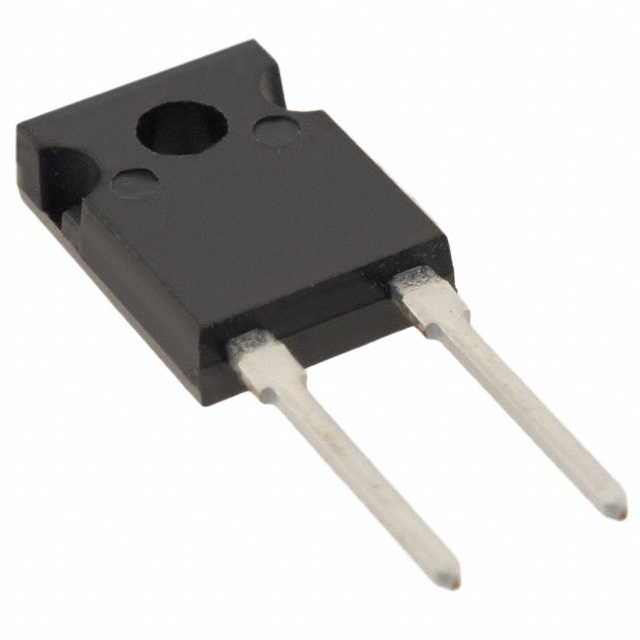From Prototyping to Production: Optimizing Through-Hole Resistor Footprints
Introduction to Through-Hole Resistors
through hole resistors have been fundamental components in electronic circuits for decades. They are known for their durability and ease of use, making them a staple in both prototyping and production environments. These resistors are inserted into pre-drilled holes on a printed circuit board (PCB) and soldered onto the opposite side, providing a strong mechanical bond. Despite the rise of Surface Mount Technology (SMT), through-hole resistors remain relevant, particularly in applications where high reliability and mechanical stress resistance are crucial.
Understanding the Standard Resistor Footprint
In PCB design, a "footprint" refers to the layout on the PCB where a component, such as a through-hole resistor, is mounted. This layout includes the pads, holes, and spacing required to accommodate the component. The footprint must match the physical dimensions of the resistor to ensure proper fit and functionality. Standard footprints for through-hole resistors typically include dimensions for lead spacing (the distance between the resistor's leads), pad size, and hole diameter. Common sizes range from 200 mils (5.08 mm) to 400 mils (10.16 mm), depending on the resistor's power rating and application.
Importance of Footprint Accuracy in PCB Design
Accurate resistor footprints are critical in PCB design for several reasons. First, they ensure that the component fits correctly during assembly, preventing issues like misalignment or improper soldering. Second, accurate footprints contribute to the overall reliability and performance of the electronic device by ensuring consistent electrical connections. Common mistakes in footprint design include incorrect lead spacing, insufficient pad sizes, or improper hole diameters, all of which can lead to manufacturing defects or component failure. Designers can avoid these errors by adhering to standard guidelines and verifying footprints using PCB design software.
Comparing Through-Hole and surface mount resistor Footprints
Through-hole and surface-mount resistors serve similar purposes but differ significantly in their footprints and applications. Through-hole resistors typically offer better mechanical strength, making them ideal for high-reliability applications, such as industrial electronics. Their footprints, however, require more space on the PCB, which can limit design flexibility. On the other hand, SMT resistors have smaller footprints, allowing for more compact and higher-density designs. However, they are generally less durable under mechanical stress and may not be suitable for high-power applications.
Designing Custom Footprints for Non-Standard Resistors
In some cases, designers may need to create custom footprints for non-standard or unique through-hole resistors. This process involves using PCB design software to define the exact dimensions of the component's leads, pads, and holes. When designing custom footprints, it is essential to consider factors such as lead spacing, pad size, and the thermal properties of the resistor. Verifying these custom footprints with a prototype board is also recommended to ensure proper fit and function before committing to mass production.
Common Applications of Through-Hole Resistors
Through-hole resistors are often preferred in applications where reliability and durability are paramount. For example, in power electronics, where components must withstand high currents and voltages, through-hole resistors provide the necessary mechanical strength and thermal dissipation. Additionally, through-hole resistors are favored in prototyping and DIY electronics due to their ease of use and reusability.
Impact of Resistor Footprint on PCB Manufacturing
The design of resistor footprints can significantly impact the PCB manufacturing process. For instance, the size and spacing of through-hole resistors influence the drilling process, soldering quality, and overall assembly efficiency. Using standard footprints helps ensure compatibility with automated manufacturing processes, reducing the likelihood of errors and improving yield. Additionally, well-designed footprints facilitate easier inspection and testing during and after assembly, further enhancing the reliability of the final product.
Footprint Standards and Guidelines
Industry standards and guidelines, such as those provided by the IPC (Institute for Printed Circuits), play a vital role in ensuring consistency and reliability in PCB design. These standards offer detailed specifications for through-hole resistor footprints, including pad sizes, hole diameters, and spacing requirements. Adhering to these guidelines is crucial for designers to ensure that their designs are compatible with industry practices and manufacturing capabilities, thereby reducing the risk of costly errors and rework.
Challenges in Through-Hole Resistor Footprint Design
Designing footprints for through-hole resistors presents several challenges, including managing space constraints on the PCB, ensuring adequate thermal management, and maintaining mechanical stability. In high-density designs, it can be challenging to allocate enough space for through-hole components without compromising other aspects of the circuit. Additionally, through-hole resistors must be designed to dissipate heat effectively, which may require careful consideration of pad sizes and PCB layout. Finally, ensuring mechanical stability is critical, especially in applications subject to vibration or mechanical stress.
Future Trends in Resistor Footprint Design
As PCB technology continues to evolve, so too does the design of resistor footprints. One emerging trend is the miniaturization of components, driven by the need for smaller, more compact electronic devices. This trend may lead to the development of smaller through-hole resistor footprints or a shift towards hybrid designs that combine through-hole and surface-mount technologies. Another trend is the increased integration of passive components into multi-layer PCBs, which could impact how footprints are designed and implemented in future electronic devices.
Selecting the Right Supplier for High Temperature Resistors
Choosing a reputable supplier is essential for ensuring the quality and reliability of high temperature surface mount resistors. Look for suppliers with a proven track record, strong customer support, and a comprehensive product range. One such supplier is unikeyic Electronics, known for their commitment to quality and their extensive selection of electronic components. Partnering with a reliable supplier like Unikeyic Electronics can provide the assurance that your resistors will meet the demanding requirements of high temperature applications.
Conclusion
Optimizing through-hole resistor footprints from prototyping to production is crucial for ensuring the reliability, performance, and manufacturability of electronic circuits. By understanding the unique characteristics of through-hole resistors, following industry standards, and carefully designing custom footprints, designers can overcome common challenges and create robust, high-quality PCB designs. As technology advances, staying informed about emerging trends and innovations will help designers continue to push the boundaries of what is possible in electronics.
Related through-hole resistors articles recommended
How to Choose the Best Through-Hole Resistor Kit for Your ProjectsWhat size is a common through-hole resistor?Maximize Your DIY Electronics with These Best Through-Hole Resistor KitsWhere to Buy the Best Through-Hole Resistor Kits OnlineSMD Resistors vs. Through-Hole Resistors: What’s the Difference?


















